Australia is vast and “nearby” seems to mean anything within a day’s driving. Undara is nearby to Cairns (“handy for a day trip” they say") and so 4 hours driving later we arrive at Undara for two nights. The road starts off
well paved and gradually downgrades the further away from we get from the east coast. The most common type of road out in the bush (apart from dirt tracks) is the long straight road with a single strip of tarmac running down the middle and dirt on either side. Protocol says that when two vehicles are approaching each other, they both move left thus having one
wheel on the dirt side and one or the tarmac. Whilst this creates clouds of dust, it does mean that both can pass. The one exception to this rule is that if you see something bigger coming towards you, then you get off the road as far as you can to let them go through. The most common vehicles in this category are the famous “Road Trains” – lorries pulling up to 4 or 5 trailers. They do not stop for anyone and it is “get out of the way or be squashed” – dead bulls, cows, wild horses, kangaroos by the side of the road are evidence that they do not stop. So far we have met about 6 road trains and seen a lot of road kill.
The Undara Lava Tubes
Undara is a camping resort situated in the middle of a National Park. The Undara volcano erupted around 170,000 years ago with a massive lava flow (estimated at 23 cubic kms of lava). This lava flowed westwards a distance of some 160 kms (due to the topography) and as it did so, it created “lava tubes” which are the reason people come here.
The resultant topography is that of a large plain with the occasional volcano showing its head above the surface. Bushfires are common
across the plain and the trees in the area have developed survival mechanisms to cope with bush fires, namely that the leaves are very high up the trunk
and the bark is shaped such that flames find it hard to climb up the tree
trunk. When the flames get to the top of the inside of the diamond, they find they have run out of oxygen and cannot burn up over the diamond wall. Also when it rains and the rain runs down the trunk, water gets trapped at the bottom of the diamond and slowly gets absorbed into the ground rather than running off at a fast rate.
Undara is an example of a “Shield Volcano” whose eruption style was described as more akin to a milk pan bubbling over than the traditional style of volcano known as a “Scoria” which erupts in the traditional “Pompeii” style. There are both type of volcanoes in the area and the landscape is dotted with the remnants of both.
a Scoria type of volcano
a number of the Shield type of volcano (Undara itself is the unassuming mound just to the right of the middle of this photograph, not the bigger one on the right).
In order to see the lava tubes, you have to be taken on a guided tour. We visited three sections of the tubes. A typical tube will be about 50 metres high and
almost just as broad. Over the past 170,000 years they have filled up with silt from rain etc and so are now only half that height inside – but still very
impressive. As the lava flowed away from the volcano, the outside of the flow cooled and solidified creating a tube made of lava. When the eruption
stopped, the tubes emptied (because they were pointing downhill) leaving the tubes. It is assumed that there still are hundreds of kilometres of undiscovered tubes. Over geological time, sections of the ceiling collapsed creating the entrances you can see in these photographs. To get into the tubes, you climb down over rocks (well done Pat!).
The whole process has created some of the most amazing colours in the rocks and above is a cheesy photograph taken at the end of a tube (do not know who the people are in the photo, they just got in the way).
Evidence of Aboriginal use of the caves has been found from numerous Kangaroo bones, stone fragments shaped into knife blades for scraping and types of fruit. Some of the caves (those with an entrance and a separate exit) are said by local elders to have a special religious interest.
After two nights at Undara, we drove further west to Cobbold Gorge – a natural phenomena out in the wild bush and tackled our first serious dirt roads.

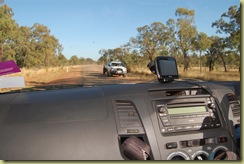
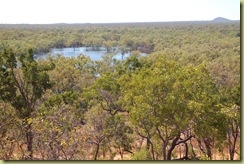
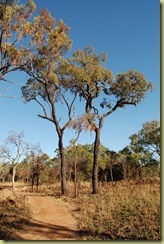
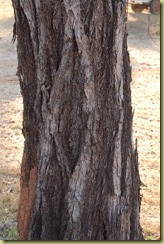
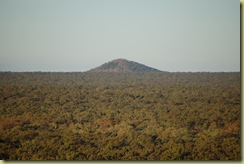
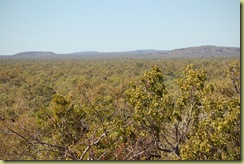
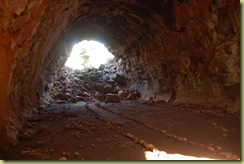
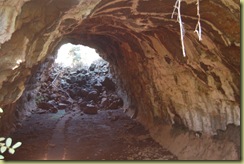
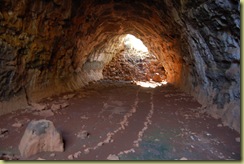
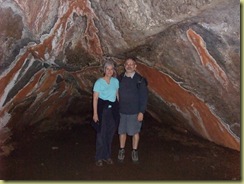

No comments:
Post a Comment